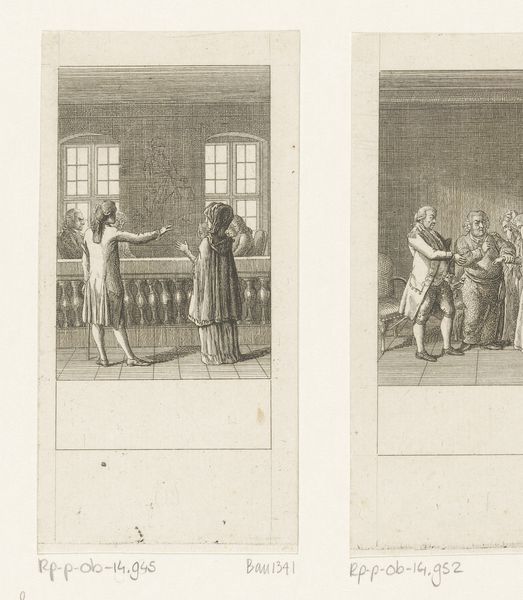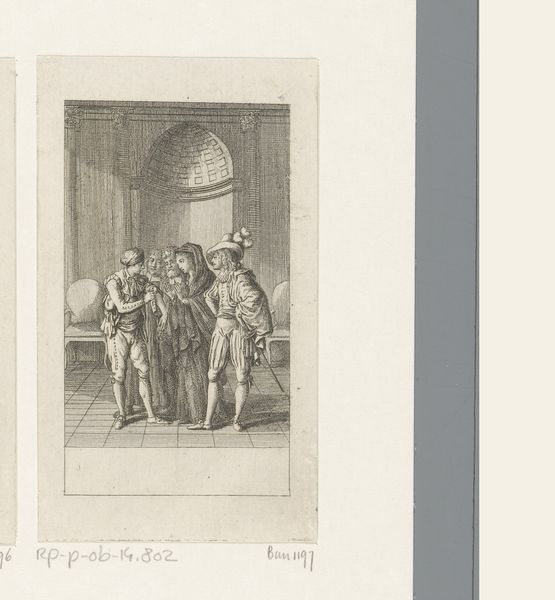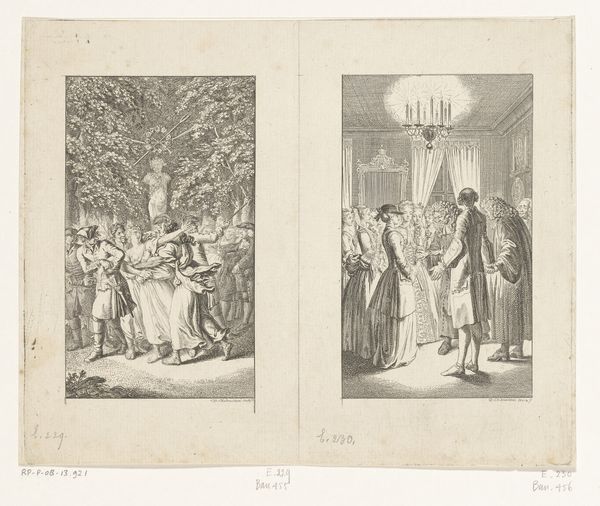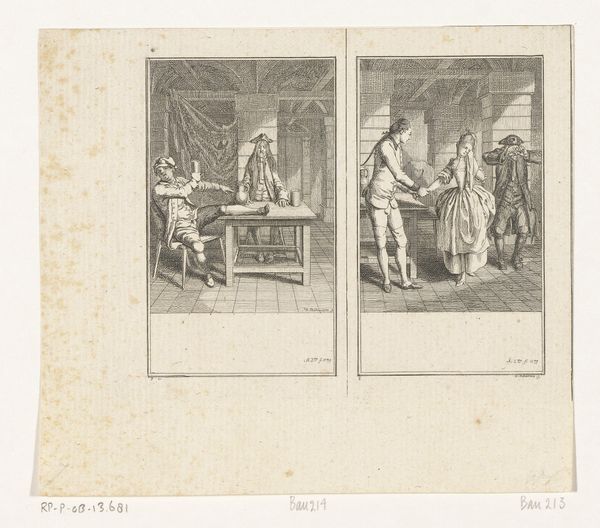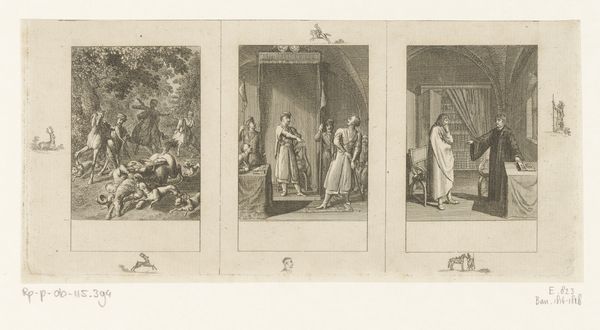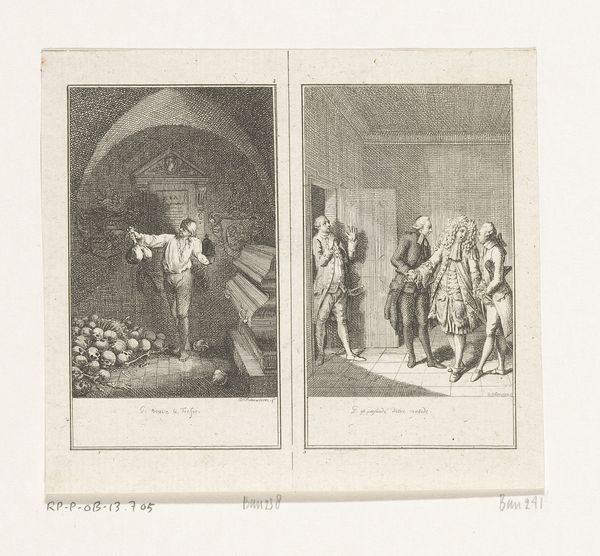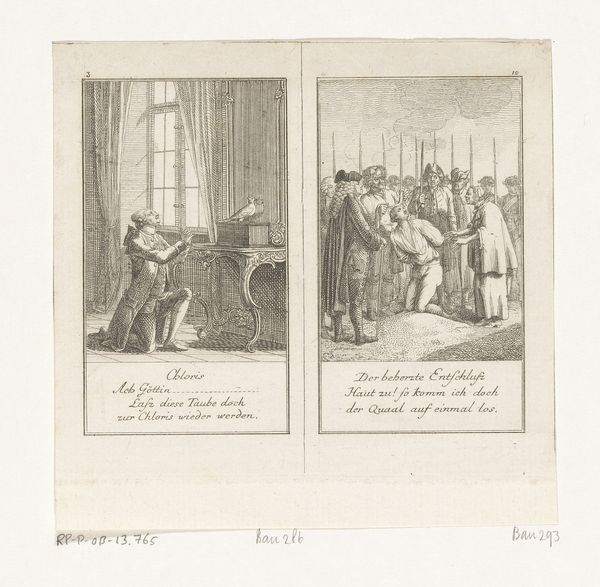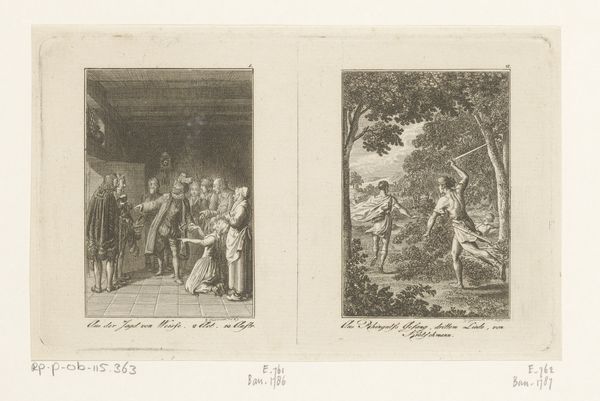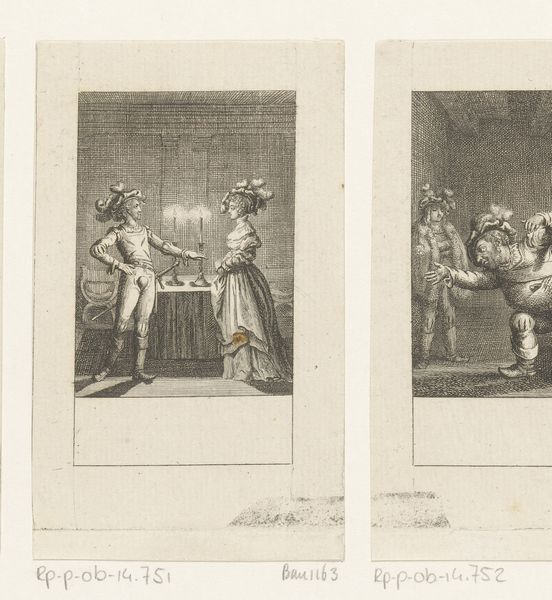
print, engraving
#
neoclacissism
#
narrative-art
# print
#
figuration
#
genre-painting
#
history-painting
#
engraving
Dimensions: height 160 mm, width 199 mm
Copyright: Rijks Museum: Open Domain
Curator: Here at the Rijksmuseum, we're looking at Daniel Nikolaus Chodowiecki's "Twee scènes uit Sebaldus Nothanker" from 1775. It's an engraving presenting two distinct narrative moments side by side. What strikes you most about this print? Editor: Immediately, the crisp lines. You can almost feel the pressure of the engraver's tool. And the stark contrast achieved with just those lines is powerful, making the figures appear almost sculpted despite the flatness of the print medium. It feels like a commentary on labor—the work evident in its creation. Curator: Absolutely. Chodowiecki was deeply engaged with the Enlightenment and its social reform movements. His prints were often intended for a broad audience, not just the elite. He aimed to disseminate moral lessons and social critiques widely. In this work we see class conflict emerge quite overtly, don't you think? Editor: It’s subtle but palpable. Look at the clothing: the meticulous detail etched into the nobleman’s attire in the garden scene compared to the more functional dress of the other figures. It all signals the hierarchies being established and then further reinforced. The materiality here informs class relations! Curator: Yes, and it relates directly to the narrative. These scenes come from a novel, illustrating conflicts and tensions within a specific social structure. There is the theme of education too; Enlightenment thinkers had clear ideas about cultivating civic virtue through pedagogy. Editor: How interesting! One must wonder, who are the print's intended viewers? Because if we look to circulation and distribution practices in the late 18th century, we find rapidly growing production that changed the dynamics of consumption of not just printed matter but artistic messaging in general. Curator: That's true. Prints like these had to compete in marketplaces shaped by patronage networks. But this also had political influence. Chodowiecki wanted to reach individuals across social strata and ignite critical debate and influence moral thought! Editor: And even the act of creating multiple impressions of one work speaks to the democratizing impulse of the era. Every print made accessible is both labor and potential—in labor put in making the artifact but in power of the narrative disseminated. A neat little revolution embodied right in this simple, striking artwork. Curator: Exactly! It gives us much to think about today when considering artwork not as commodity but agentive. Thank you for highlighting these issues through materiality and access. Editor: Indeed, it reminds us to look beneath the surface of the image and feel its societal imprint.
Comments
No comments
Be the first to comment and join the conversation on the ultimate creative platform.
